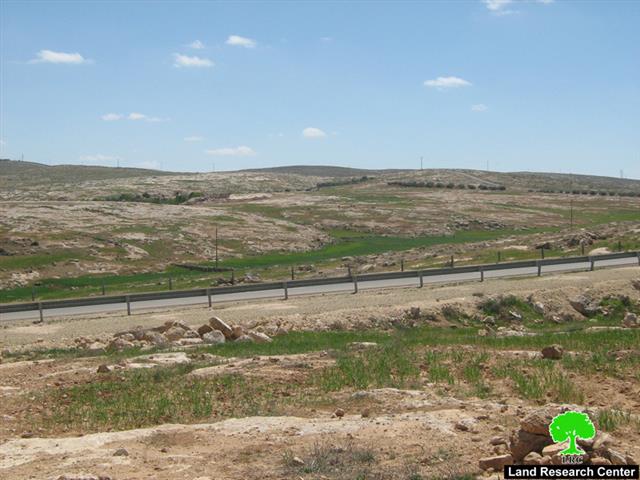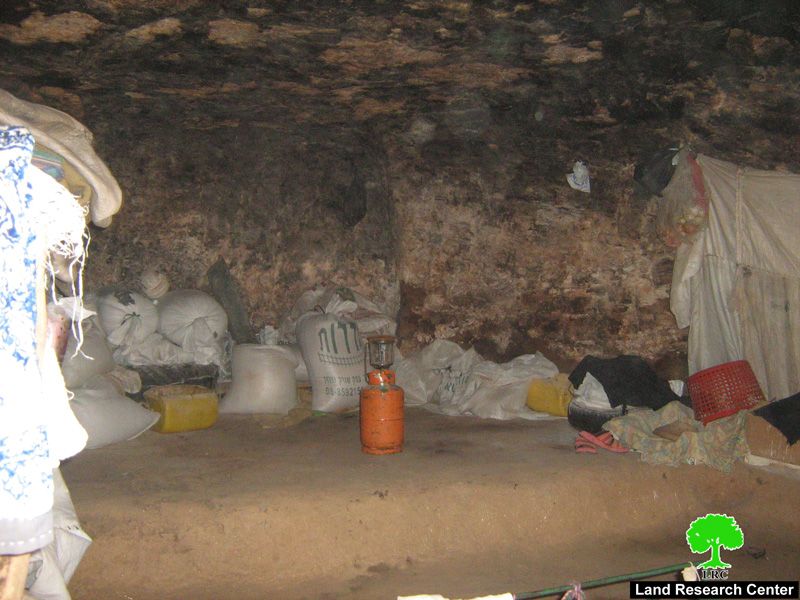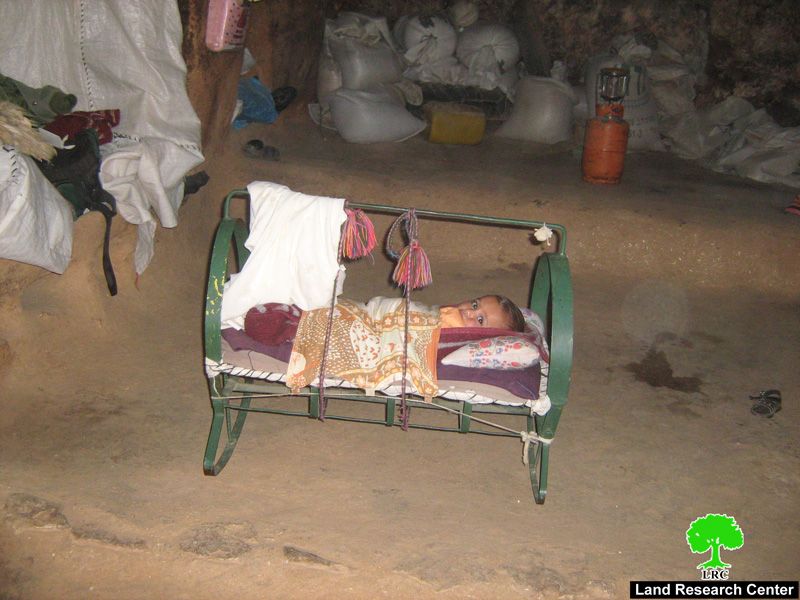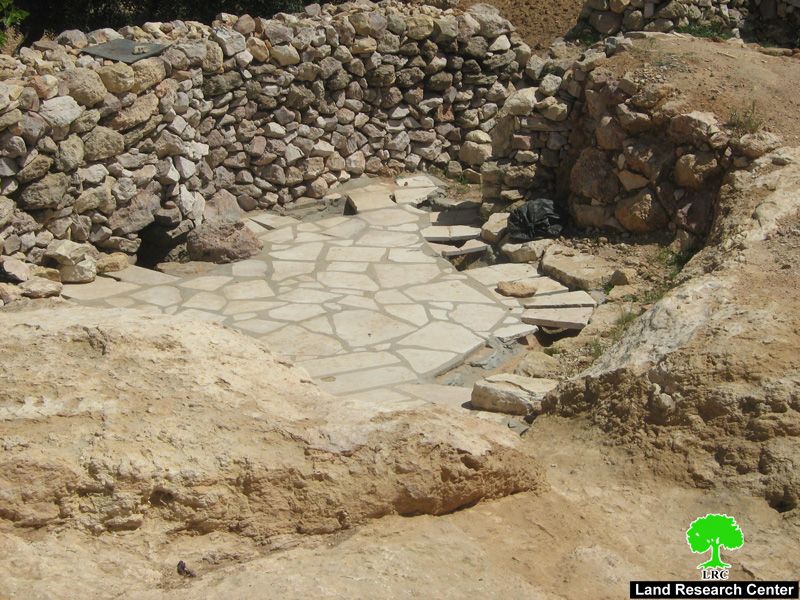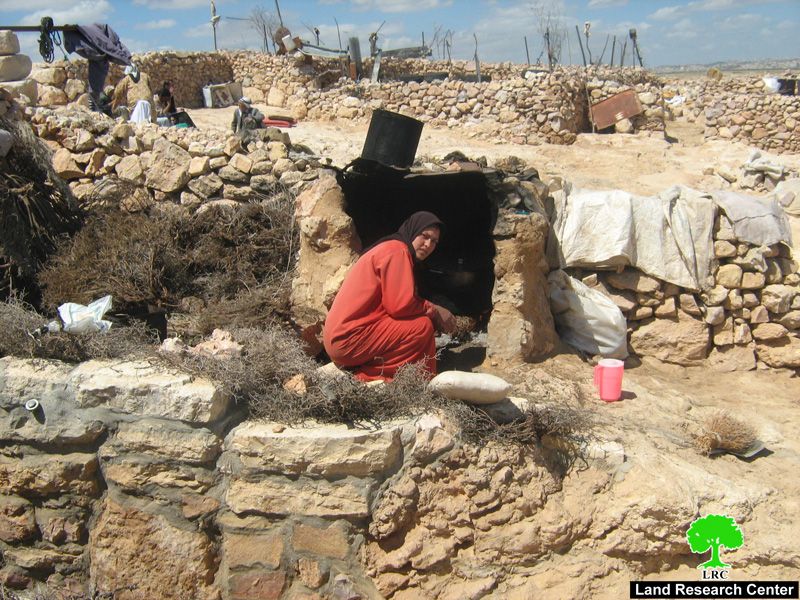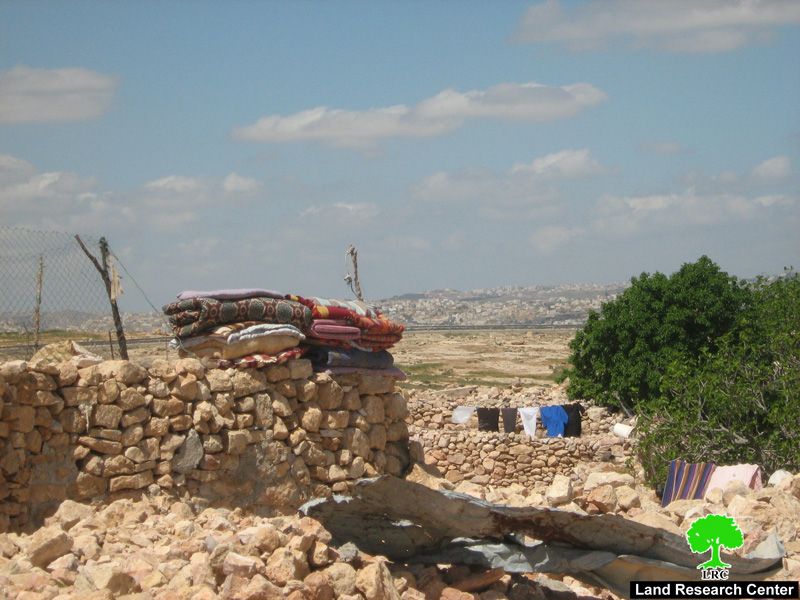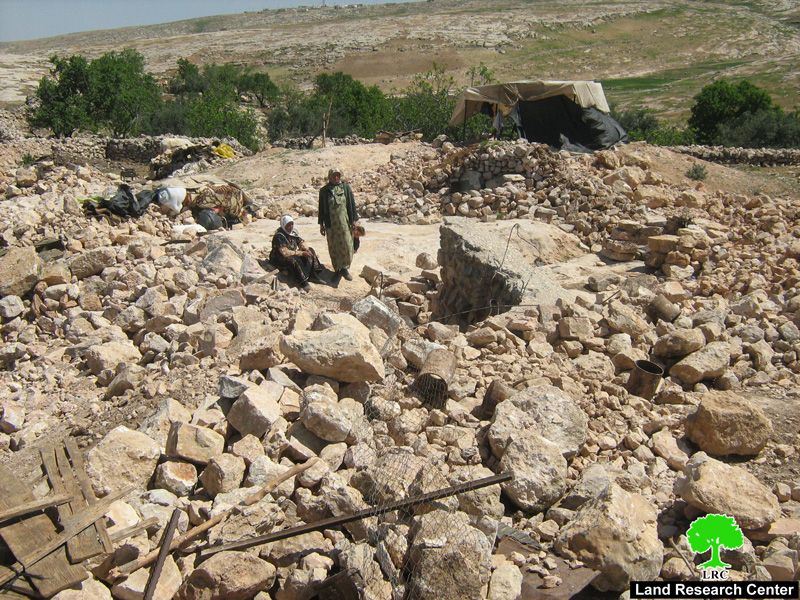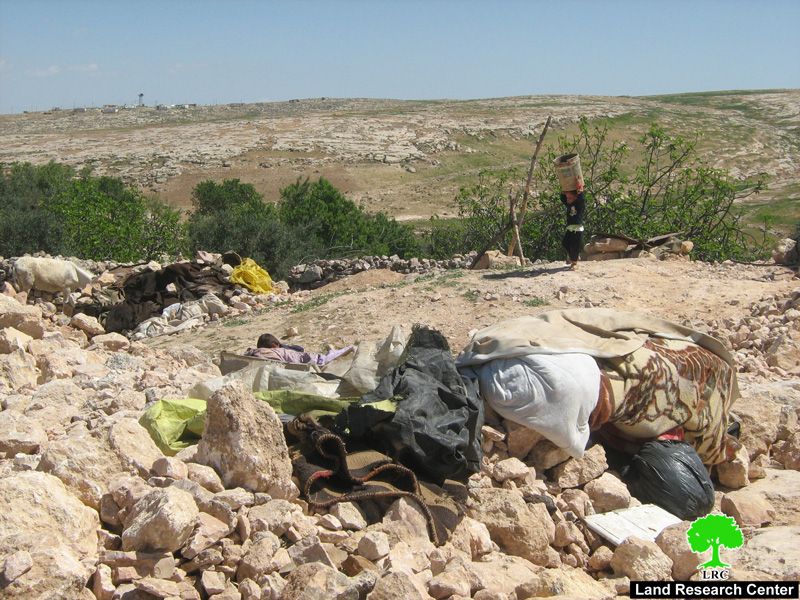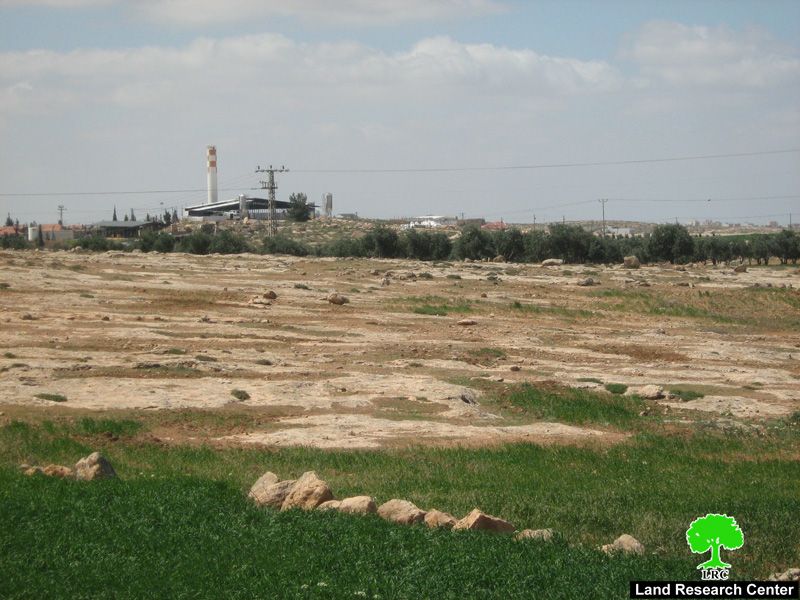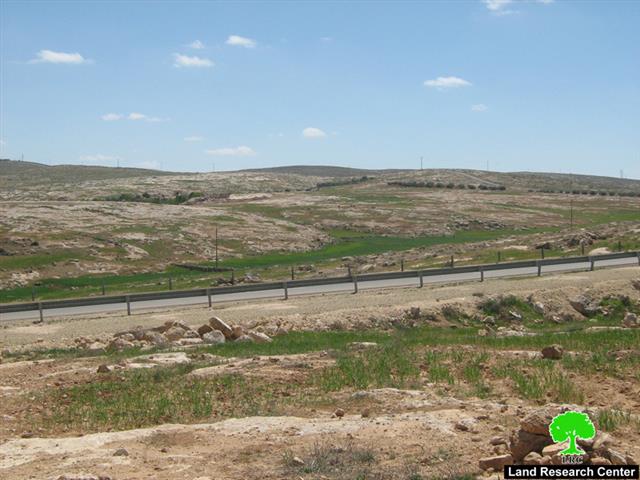Israeli occupation forces demolished a number of caves, animal pens and mud huts in khirbat Qwawis located south of the town of Yatta on March 19th, 2008. The structures were demolished under the pretext that they were built without permit in an area classified as Area C. The khirbat is located in parallel to Road 317 which links the Israeli colonies in the area. Residents of the khirbet indicated that the goal behind the demolitions is to force them to leave as a prelude to the taking over of their lands (area = 400 dunums) by the colonists. See Photo 1, road 317
The demolitions have affected four groups of housing structures and animals pens according to the following classification:
Group 1:
Israeli occupation forces bulldozed three rocky housing structures topped with plastics covers. In addition, these forces demolished three animal pens. The owners of the housing structures are as follows:
-
Yousef Mohammad Ahamad Nu’man Abu ‘Iram who used to live in the structure along with his 8-member family.
-
Abdel Aziz Mohammad Ahmad Nu’man Abu ‘Iram who used to live there along with his 10-member family.
-
Ibrahim Mohammad Ahmad Abu ‘Iram who used to live in the structure with his 16-member family.
Photo 2: Women from the family of Abu ‘Iram near the debris of
the housing structure of Yousef Mohammad Ahmad Nu’man – Qawawis
Photo 3: A cave, unsuitable for human living. Mr. Yousef Abu ‘Iram lives here to ensure his right to his land.
The owners of the demolished structures earn their living from farming and herding. Israeli occupation forces delivered to them and all of those who live in the area a number of 'Stop Building' orders despite the fact that they have been living in caves and grottos, not houses per se.
The animal pens, caves and grottos date as far back as pre-1948. They were used as shelter for both the humans and sheep. During the demolition process, dirt and rocks were piled up at the entrance of one of the targeted caves shutting it on its content of fodder and family belongings. The residents were, then, obliged to hire a small bulldozer to remove the debris in order to access their food and the food of their animals.
Group 2:
Mud huts belonging to the following owners were also demolished:
- Mohammad Ibrahim Ahmad Abu ‘Iram who used to live in the structure along with his 8-member family.
- Ibrahim Ahmad Ismaeel Abu ‘Iram who is in his late 80’s. He used to live in the hut along with his old wife.
- Riyad Ibrahim Ahmad Ismaeel Abu ‘Iram who used to live in the hut along with his 5-member family.
Photo 4: A child from Abu ‘Iram clan .. what is left of his childhood
after occupation forces destroyed his residency place?
Mr. Riyad Abu ‘Iram indicated the following to the Land Research Center’s field worker: 'Israeli occupation forces have closed down the same caves in 2004 as well as destroying one of the huts, too, without any prior warning. Also in 2004, Israeli colonists took advantage of the fact that most of the elder’s of the Khirbet were in Jordan attending a wedding of one of their relatives. The colonists raided the khirbet. The residents of the khirbet were forced out of their caves and were replaced by 6 colonist families. They even brought their sheep, cows and chicken with them as they renovated one of the caves to suit their living needs. They stayed there for a period of a year and a half. We hired the Israeli lawyer, Shlomo Lecker, who managed to get a court order calling for the immediate removal of the colonists. They moved out and we moved back in.'
Photo 5: Damage caused by the colonists during their rampage against the housing structures in Qawawis.
Group 3:
Israeli occupation forces demolished mud huts and rock-made housing structures that belonged to the following:
-
Mahmoud Ahmad Ismaeel Abu ‘Iram in which his 2-member family used to reside
-
Ziad Mahmoud ahmad Abu ‘Iram in which his 4-member family used to live.
-
Mustafa Mahmoud Ahmad Abu ‘Iram in which his 4-member family used to live.
The structures in this group were demolished twice in the past; in 2006 and in 2007. And now, they have been targeted again in 2008.
Photo 6: The residents of khirbet Qawawis live a primitive life as they try to safeguard and protect their lands.
Group 4:
The demolition of a house owned by Khalil Ahmad Isameel Abu ‘Iram in which a family of 8 used to live.
Photo 7: The house of Mr. Khalil Abu ‘Iram which was built before 1967.
Notes:
1. All of the housing structures are made of stones piled atop of each other and then covered with plastic sheds. The rocks are “cemented” together using mud as cement and iron are not allowed to be used in the construction of these structures.
2. The present caves are usually used by the residents in the winter as shelters since the other structures do not provide any protection against the weather conditions.
3. As a result of the recent demolitions, the residents have become homeless and their belongings were left in the open.
Photo 8: The residents of the khirbet have become homeless in the wide open.
4. After the demolitions, the children of the khirbet were relocated to their relatives’ houses in the village of Al Karmel as to be closer to their schools and to live in a safer environment.
5. Residents of the khirbet have indicated that they have always been attacked and targeted by the colonists; sometimes the colonists would come riding their horses and inform the residents that they have to leave and vacate the land. Other times they would stay for long hours near the khirbet’s only water cistern and prevent the residents from using it. Also, incidents of opening fire at sheep and letting colonists’ dogs attack the Palestinians of Qawaswis have been reported. The residents have indicated that “we can’t leave Qawawis because we are afraid that the colonists would takeover our land. We are protecting our land by staying in it.”
Photo 9: The tent set up by the Abu ‘Iram family
Background Information about Qawawis:
The region of Qawawis (area = 400 dunums) is a combination of agricultural lands, valleys, hills, mountains and grazing fields. It is located south of the town of Yatta and is close to the Palestinian communities of Ma’ein, Al Birka and Al Karmel to which it is connected through an old sandy road.
The population of Qawawis is about 100 individuals from the extended family of Abu ‘Iram. The breadwinners in the khirbet depend on agriculture and herding as their main source of income. The khirbet has only two water cisterns and its inhabitants cook using wood and illuminate the dark nights using gas lamps.
The region is bounded from the east by the illegal colonial outpost at Umm Al Shaqhan, from the west by the colony of Susiya and the by-pass road, from the north by the town of Yatta and the village of Ma’ein while the khirbet of Umm Al Arayes borders it from the south.
Photo 10: Destruction of Palestinian housing structures in Qawawis
Photo 11: The expansion of the colony of Susiya.
The residents of Qawawis had a number of demands that would help their steadfastness on their lands. These demands include the following:
1. Returning their lands taking over by the colonists and the removal of all colonists from the Yatta region.
2. Reimbursing them for the financial and psychological losses they have encountered due to the repeated demolitions, attacks, sheep killing, plants burning, etc.
3. Providing tents to shelter them.
4. Reconstructing the animal pens to offer shelter for their sheep.
5. Offering any type of services such as electricity, water networks and food items.
6. Providing trees to plant it in the threatened lands.
Prepared by:
The Land Research Center
LRC


